Material Safety Data Sheet
Safety Data Sheet
acc. to OSHA HCS
Printing date 08/03/2023
Revision date 08/03/2023
1 Identification
Product identifier
- Trade name: Fenbendazole
- Synonym: N-[6-(phenylthio)-1H-benzimidazol-2-yl]-carbamic acid, methyl ester Methyl 5-(phenylthio)-2-benzimidazolecarbamate
- Article number: 19687
- CAS Number: 43210-67-9
- EC number: 256-145-7
- Application of the substance / the mixture: This product is for research use – Not for human or veterinary diagnostic or therapeutic use.
Details of the supplier of the safety data sheet
- Manufacturer/Supplier: Fenpure LLC, 1704 Llano St., Ste B #1205, Santa Fe, NM 87505, United States
- Information department: Product safety department
- Emergency telephone number: For information in USA, call: +1505395910
2 Hazard(s) identification
Classification of the substance or mixture
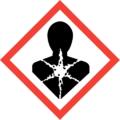 GHS08 Health hazard
GHS08 Health hazard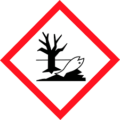 Toxic to Reproduction 2
Toxic to Reproduction 2
H361 Suspected of damaging fertility or the unborn child.
GHS09 Environment
Aquatic Acute 1 H400 Very toxic to aquatic life.
Aquatic Chronic 1 H410 Very toxic to aquatic life with long lasting effects.
Label elements
-
GHS label elements
The substance is classified and labeled according to the Globally Harmonized System (GHS). - Hazard pictograms
 GHS08
GHS08
 GHS09
GHS09
- Signal word Warning
-
Hazard statements
H361 Suspected of damaging fertility or the unborn child.
H410 Very toxic to aquatic life with long lasting effects. -
Precautionary statements
P201 Obtain special instructions before use. P202 Do not handle until all safety precautions have been read and understood. P273 Avoid release to the environment.
P280 Wear protective gloves/protective clothing/eye protection/face protection. P308+P313 IF exposed or concerned: Get medical advice/attention.
P391 Collect spillage.
P405 Store locked up.
P501 Dispose of contents/container in accordance with local/regional/national/international regulations.
Classification system:
- NFPA ratings (scale 0 – 4)
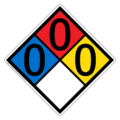
Health = 0
Fire = 0
Reactivity = 0
- HMIS-ratings (scale 0 – 4)
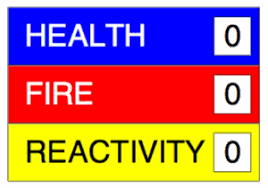
Health = 0
Fire = 0
Reactivity = 0
- Other hazards
- Results of PBT and vPvB assessment
- PBT: Not applicable.
- vPvB: Not applicable.
3 Composition/information on ingredients
- Chemical characterization: Substances
-
CAS No. Description: 43210-67-9 Fenbendazole
Identification number(s):
- EC number: 256-145-7
4 First-aid measures
Description of First Aid Measures:
- Inhalation: Move to fresh air. Seek medical advice if symptoms occur.
- Skin Contact: Typically, this product does not cause skin irritation.
- Eye Contact: Rinse open eye thoroughly with running water for several minutes.
-
Ingestion: If symptoms persist, seek medical advice.
Information for doctor:
- Primary Symptoms and Effects (Acute and Delayed): No additional relevant information available.
- Immediate Medical Attention and Special Treatment: No further relevant information available.
5 Fire-fighting measures
Extinguishing Media
-
Suitable Extinguishing Agents: Use firefighting methods appropriate to the surrounding environment.
Avoid using a direct water stream, as it may be ineffective. - Special Hazards from Substance or Mixture: No additional relevant information available.
Advice for Firefighters
- Protective Equipment: No specific protective measures required.
6 Accidental release measures
- Personal precautions, protective equipment and emergency procedures: Not required.
-
Environmental precautions: Inform respective authorities in case of seepage into water course or sewage system.
Do not allow to enter sewers/ surface or ground water. - Methods and material for containment and cleaning up: Dispose contaminated material as waste according to section 13.
-
Reference to other sections:
See Section 7 for information on safe handling.
See Section 8 for information on personal protection equipment.
See Section 13 for disposal information.
Protective Action Criteria for Chemicals:
- PAC-1: Substance is not listed.
- PAC-2: Substance is not listed.
- PAC-3: Substance is not listed.
7 Handling and storage
Handling
-
Precautions for Safe Handling:
– No special precautions are necessary with proper use.
– Avoid inhaling dust, fumes, gases, mist, vapors, or spray.
– Minimize prolonged or repeated exposure.
– Keep away from ignition sources.
– Take steps to prevent static discharge. -
Protection Against Explosions and Fires:
– No special measures required. -
Conditions for safe storage, including any incompatibilities:
– Keep container tightly closed. – Store in accordance with information listed on the product insert.
-
Storage Guidelines:
– Store as per the guidelines on the product insert. -
Requirements for Storage Rooms and Containers:
– No specific requirements.
8 Exposure controIs/personal protection
-
Additional information about design of technical systems: No further data; see section 7.
Control parameters
- Components with limit values that require monitoring at the workplace: Not required.
-
Additional information: The lists that were valid during the creation were used as basis.
Exposure controls
Personal protective equipment:
-
General protective and hygienic measures:
Keep away from foodstuffs, beverages and feed.
Wash hands before breaks and at the end of work. - Breathing equipment: Not required.
-
Protection of hands:
The glove material has to be impermeable and resistant to the product/ the substance/ the preparation.
Due to missing tests no recommendation to the glove material can be given for the product/ the preparation/ the chemical mixture.
Selection of the glove material on consideration of the penetration times, rates of diffusion and the degradation -
Material of gloves
The selection of the suitable gloves does not only depend on the material, but also on further marks of
quality and varies from manufacturer to manufacturer. -
Penetration time of glove material
The exact break through time has to be found out by the manufacturer of the protective gloves and has to be observed. -
Eye protection: Not required.
9 Physical and chemical properties
Information on basic physical and chemical properties
General Information
-
Appearance:
Form: Solid
Color: Not determined. - Odor: Characteristic
- Structural Formula: C15H13N302S
- Molecular Weight: 299.3 g/mol
- Odor threshold: Not determined.
- pH-value: Not applicable.
Change in condition
- Melting point/Melting range: Undetermined.
- Boiling point/Boiling range: Undetermined.
- Flash point: Not applicable.
- Flammability (solid, gaseous): Product is not flammable.
- Decomposition temperature: Not determined.
- Ignition temperature: Not determined.
- Danger of explosion: Product does not present an explosion hazard.
-
Explosion limits:
Lower: Not determined.
Upper: Not determined. - Vapor pressure: Not applicable.
-
Density: Not determined.
– Relative density Not determined.
– Vapor density Not applicable.
– Evaporation rate Not applicable. - Solubility in / Miscibility with Water: Not determined.
- Partition coefficient (n-octanol/water): Not determined.
-
Viscosity:
Dynamic: Not applicable.
Kinematic: Not applicable.
SOLUBILITY DMF: 10 mg/mL; DMSO: 10 mg/mL
– Other information: No further relevant information available.
10 Stability and reactivity
- Reactivity: No further relevant information available.
Chemical stability
-
Thermal decomposition / conditions to be avoided:
No decomposition if used according to specifications. - Possibility of hazardous reactions: No dangerous reactions known.
- Conditions to avoid: No further relevant information available.
- Incompatible materials: strong oxidizing agents
-
Hazardous decomposition products: carbon oxides, nitrogen oxides, sulfur oxides
11 Toxicological information
- RTECS Number: DD6520500
Information on toxicological effects
Acute toxicity:
LD/LC50 values that are relevant for classification:
- Oral
– LD50 | >10 g/kg (mouse) / >10 g/kg (rat)
– Intraperitoneal LD50 | >1,250 mg/kg (rat)
– Subcutaneous LD50 | >2 glkg (rat)
Primary irritant effect:
- on the skin: No irritant effect.
- on the eye: No irritating effect.
- Sensitization: No sensitizing effects known.
Additional toxicological information:
-
Carcinogenic categories
– IARC (International Agency for Research on Cancer) Substance is not listed.
– NTP (National Toxicology Program) Substance is not listed.
– OSHA-Ca (Occupational Safety & Health Administration) Substance is not listed.
12 Ecological information
Toxicity
- Aquatic Toxicity: No additional relevant information available.
- Ecotoxicological Effects: Very toxic to fish.
- Persistence and Degradability: No further relevant information available.
Behavior in Environmental Systems
- Bioaccumulative Potential: No further relevant information available.
- Mobility in Soil: No further relevant information available.
Additional Ecological Information
General Notes:
-
Water hazard class 2 (self-assessment): hazardous to water.
– Prevent product from reaching groundwater, water bodies, or sewage systems.
– Even small leaks pose a risk to drinking water.
– Toxic to fish, plankton, and aquatic organisms. -
Results of PBT and vPvB Assessment
– PBT: Not applicable.
– vPvB: Not applicable - Other Adverse Effects: No further relevant information available.
13 Disposal considerations
Waste treatment methods
Recommendation:
Must not be disposed of together with household garbage. Do not allow product to reach sewage system.
Uncleaned packagings:
Recommendation: Disposal must be made according to official regulations.
14 Transport information
- UN-Number
- DOT, IMDG, IATA
- UN proper shipping name
– DOT, IATA: Environmentally hazardous substance, solid, n.o.s.
(Fenbendazole)
– IMDG: ENVIRONMENTALLY HAZARDOUS SUBSTANCE,
SOLID, N.O.S. (Fenbendazole)
-
Transport hazard class(es)
– DOT
– Class 9 Miscellaneous dangerous substances and articles
– Label 9
IMDG, IATA
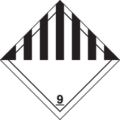
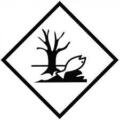
– Class 9 Miscellaneous dangerous substances and articles
– Label 9
-
Packing group
– DOT, IMDG, IATA: ||| -
Environmental hazards:
– Marine pollutant: Symbol (fish and tree)
– Special marking (IATA): Symbol (fish and tree) - Special precautions for user: Warning: Miscellaneous dangerous substances and articles
- Hazard identification number (Kemler code): 90
- EMS Number: F-A,S-F
- Stowage Category: A
- Stowage Code: SW23 When transported in BK3 bulk container, see 7.6.2.12 and 7.7.3.9.
- Transport in bulk according to Annex Il of MARPOL73/78 and the IBC Code: Not applicable.
-
Transport/Additional information:
– DOT
– Quantity limitations: On passenger aircraft/rail: 400 kg, On cargo aircraft only: 400 kg - IMDG
- Limited quantities (LQ): 5 kg
-
Excepted quantities (EQ) Code: E1
Maximum net quantity per inner packaging: 30 g
Maximum net quantity per outer packaging: 1000 g - IATA
-
Remarks: When sold in quantities of less than or equal to 1 mL, or 1 g, with an Excepted Quantity Code of E1, E2, E4, or ES, this item meets the De Minimis Quantities exemption, per IATA 2.6.10.
Therefore packaging does not have to be labeled as Dangerous Goods/Excepted Quantity. - UN “Model Regulation™: UN 3077 ENVIRONMENTALLY HAZARDOUS SUBSTANCE, SOLID, N.O.S. (FENBENDAZOLE), 9, |||
15 Regulatory information
- Safety, health and environmental regulations/legislation specific for the substance or mixture: No further relevant information available.
Sara
- Section 355 (extremely hazardous substances): Substance is not listed.
- Section 313 (Specific toxic chemical listings): Substance is not listed.
- TSCA (Toxic Substances Control Act): Substance is not listed.
-
Hazardous Air Pollutants: Substance is not listed.
Proposition 65
- Chemicals known to cause cancer: Substance is not listed.
- Chemicals known to cause reproductive toxicity for females: Substance is not listed.
- Chemicals known to cause reproductive toxicity for males: Substance is not listed.
- Chemicals known to cause developmental toxicity: Substance is not listed.
Carcinogenic categories
- EPA (Environmental Protection Agency): Substance is not listed.
- TLV (Threshold Limit Value): Substance is not listed.
- NIOSH-Ca (National Institute for Occupational Safety and Health): Substance is not listed.
- Chemical safety assessment: A Chemical Safety Assessment has not been carried out.
16 Other information
All chemicals may pose unknown hazards and should be used with caution. This SDS applies only to the material as packaged. If this product is combined with other materials, deteriorates, or becomes contaminated, it may pose hazards not mentioned in this SDS. Fenpure LLC assumes no responsibility for incidental or consequential damages, including lost profits, arising from the use of these data. It shall be the user’s responsibility to develop proper methods of handling and personal protection based on the actual conditions of use. While this SDS is based on technical data judged to be reliable, Fenpure LLC assumes no responsibility for the completeness or accuracy of the information contained herein.
- Department issuing SDS: Environment protection department.
- Contact: –
- Date of preparation / last revision: 08/03/2023
-
Abbreviations and acronyms:
IMDG: International Maritime Code for Dangerous Goods
DOT: US Department of Transportation
IATA: International Air Transport Association
EINECS: European Inventory of Existing Commercial Chemical Substances
CAS: Chemical Abstracts Service (division of the American Chemical Society)
NFPA: National Fire Protection Association (USA)
HMIS: Hazardous Materials Identification System (USA)
LC50: Lethal concentration, 50 percent
LD50: Lethal dose, 50 percent
PBT: Persistent, Bioaccumulative and Toxic
VPVB: very Persistent and very Bioaccumulative
NIOSH: National Institute for Occupational Safety
OSHA: Occupational Safety & Health (Contd. from page 8)
TLV: Threshold Limit Value
PEL: Permissible Exposure Limit
REL: Recommended Exposure Limit
Toxic to Reproduction 2: Reproductive toxicity — Category 2 Aquatic Acute 1: Hazardous to the aquatic environment – acute aquatic hazard — Category 1
Aquatic Chronic 1: Hazardous to the aquatic environment – long-term aquatic hazard – Category 1
- Data compared to the previous version altered.
